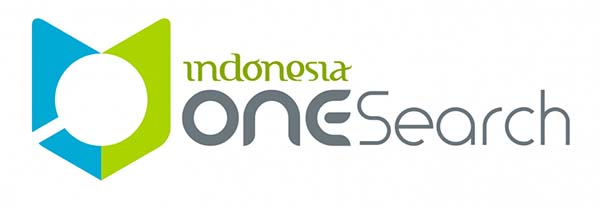PENGEMBANGAN BUKU PANDUAN MODEL BLENDED LEARNING BERBASIS WEBBLOG
DOI:
https://doi.org/10.23887/prasi.v15i01.24828Keywords:
blended learning, webblog, pengembangan, buku pedomanAbstract
ABSTRAK
Penelitian ini adalah penelitian pengembangan. Pengembangan dimaksud bertalian dengan main product revision, yaitu perancangan buku panduan Model Blended Learning Berbasis Webblog. Metode yang digunakan dalam penelitian ini adalah metode penelitian pengembangan yang berbasis FGD dan angket reviewer mendalam sebagai alat evaluasi. Hasil FGD dan angket reviewer mendalam dari sejumlah ahli dan calon pengguna buku pedoman, ditetapkan bahwa 1) format buku pedoman yang ergonomis adalah A5; 2) isi bahasan buku sebagian disusun dalam format bahasan tutorial sejalan dengan fungsi buku pedoman; 3) ukuran halaman A5 masih memberi ruang yang nyaman untuk pembacaan gambar-gambar bahan tutorial hasil screenshot; 4) layout naskah rata kiri-kanan dengan kepala alinea rata kiri dianggap cukup nyaman; 5) cover buku yang polos dianggap cukup eye-catching dengan penggunaan huruf sans serif; dan 6) font dengan rata tengah pada tampilan cover buku dianggap lebih nyaman.
Kata-kata kunci: blended learning, webblog, pengembangan, buku pedoman
ABSTRACT
This research is a 2nd year development research. Previous research is a development study revision of the implementation of blended learning models based serve in the D-3 Visual Communication Design FBS, Undiksha,. The development is already reached the main position of product revision based on the findings of some problems in the steps and evaluation of learning activities. The revision of the learning model was developed using the pattern of the approach of Chiesa & Frattini (2009) relating to three achievements of development research, namely inputs (results of inventory and research theory), process (model development) and the outputs (formula of learning activities). The previous research has analyzed three problems that are a barrier to the implementation of this learning model, which is related to input, process, and output. The results of the analysis became a consideration in determining the revision of implementation of this blended learning model based serve. All records and findings in the research activities were compiled into a key ingredient in the writing of the Manual on the Blended learning Model based on the Webblog.
Keywords: blended learning, inputs; process, outputs, manual, webblog
References
Chiesa, Vittorio & Federico Frattini. (2009). Evaluation and Performance Measurement of Research and Development Techniques and Perspectives for Multi-Level Analysis.Massachusetts: Edward Elgar Publishing, Inc.
Darmawangsa, Dante. (2014). “Implementasi Teknik Menulis Kolaboratif Melalui Blog untuk Meningkatkan Ketrampilan Menulis Bahasa Perancis”. Dimuat dalam Barista, Vol. 1, Nomor 2, Desember 2014.
Dick, Walter, Lou Carey, and James O. Carey. (2005) [1978]. The Systematic Design of Instruction (6th ed.). Allyn & Bacon.
Horn, Michael B. and Heather Staker. (2014). Blended: Using Disruptive Innovation to Improve Schools 6. Dapat ditemukan di https://www.blendedlearning.org/ models/
Jajang S. (2013). “Model Pembelajaran Seni Rupa Berbasis Webblog”. Makalah disampaikan dalam Forum Ilmiah IX (Seminar dan Lokakarya Internasional) FPBS UPI: Kajian-kajian Mutakhir dalam Bahasa, Sastra, Seni, dan Pembelajarannya. 20 -21 November 2013.
Jajang, Hariwardana, dan Herliyani. (2015). Analisis Visual Graphical User Interface (GUI) Website Universitas Negeri Eks. IKIP: Bahan Pengembangan Materi Ajar Desain Komunikasi Visual Berbasis Pendidikan Karakter. Laporan Penelitian Lemlit Undiksha.
Kumar, K. (1987). “Conducting focus group interviews in developing countries”. A.I.D. Program Design and Evaluation Methodology Report No. 8. Washington, D.C.: U.S. Agency for International Development.
Lalima & Dangwal. (2017). Blended learning: An Innovative Approach. Universal Journal of Educational Research 5(1): 129-136, 2017 http://www.hrpub.org DOI: 10.13189/ujer.2017.050116
Sunismi dan Abdul Halim Fathani. (2017). “Pengembangan Model Collaborative Learning Matemetika Berbasis Blog Mata Kuliah Kalkulus II”. Makalah pada Seminar Nasional Matematika dan Aplikasinya, Surabaya, Unair, 21 Oktober 2017. TechnoLEARN Vol. 6: No. 1: June 2016
Downloads
Published
Issue
Section
License
Authors who publish with Prasi agree to the following terms:- Authors retain copyright and grant the journal the right of first publication with the work simultaneously licensed under a Creative Commons Attribution License (CC BY-SA 4.0) that allows others to share the work with an acknowledgment of the work's authorship and initial publication in this journal
- Authors are able to enter into separate, additional contractual arrangements for the non-exclusive distribution of the journal's published version of the work (e.g., post it to an institutional repository or publish it in a book), with an acknowledgment of its initial publication in this journal.
- Authors are permitted and encouraged to post their work online (e.g., in institutional repositories or on their website) prior to and during the submission process, as it can lead to productive exchanges, as well as earlier and greater citation of published work. (See The Effect of Open Access)


.png)
.png)









